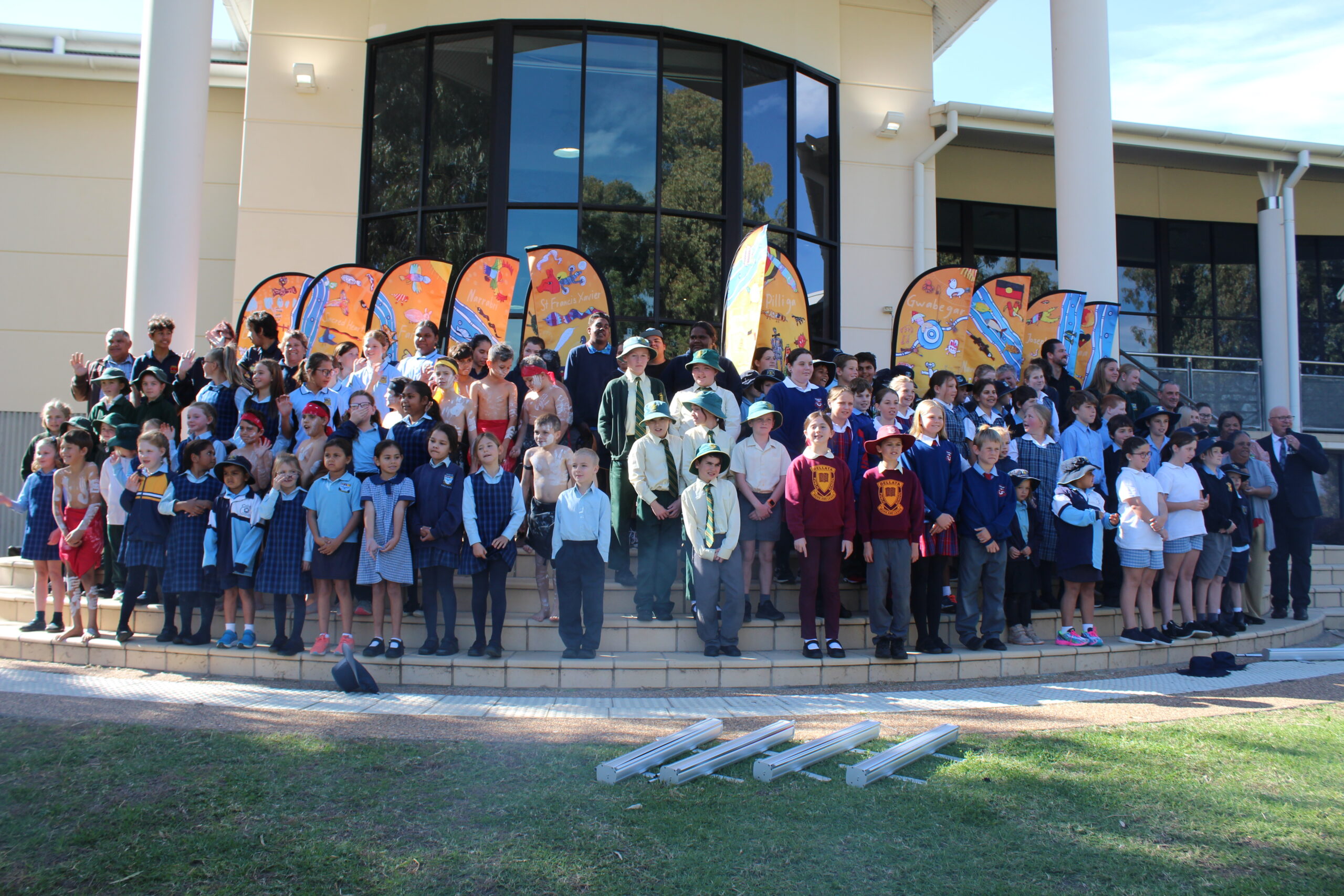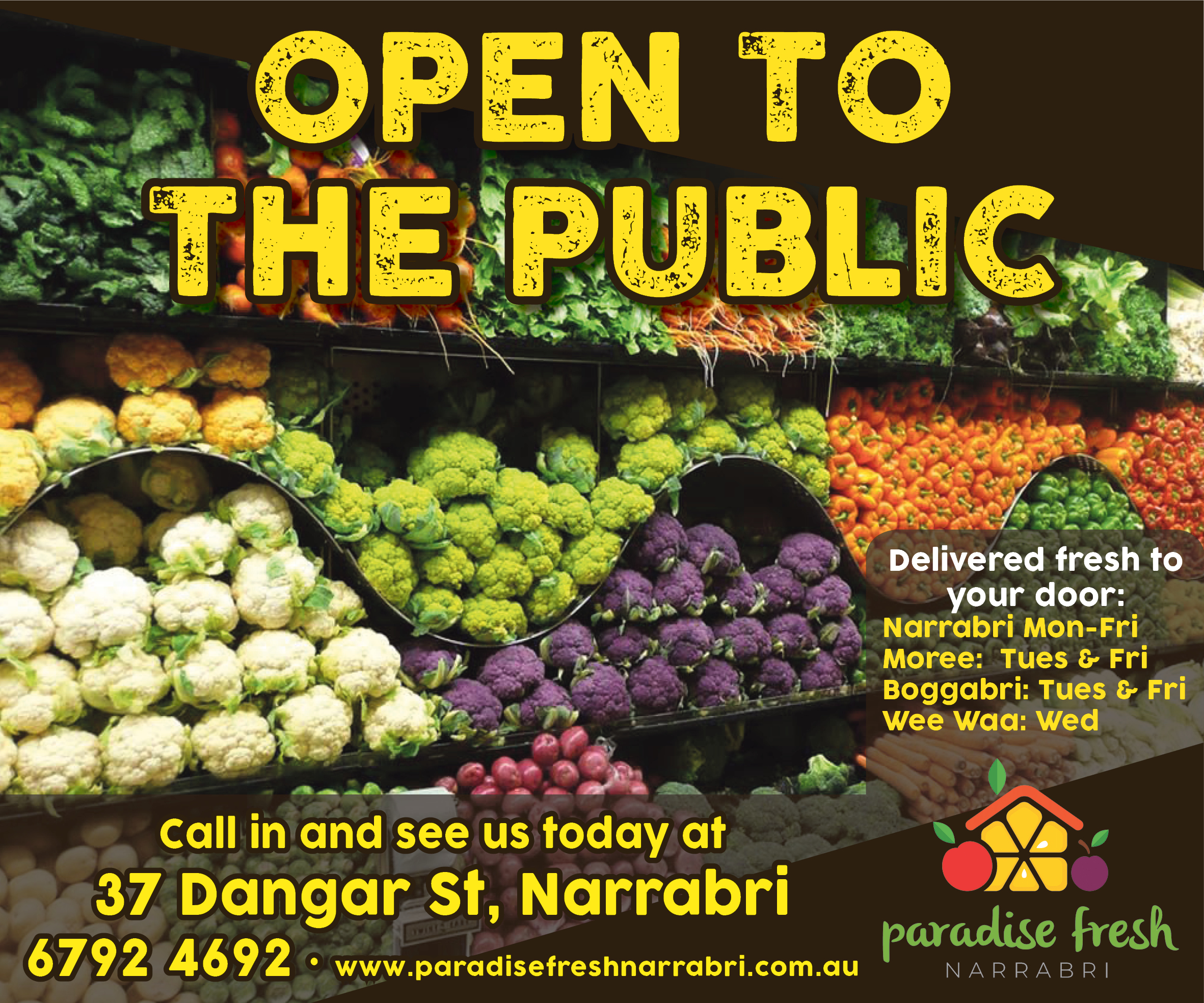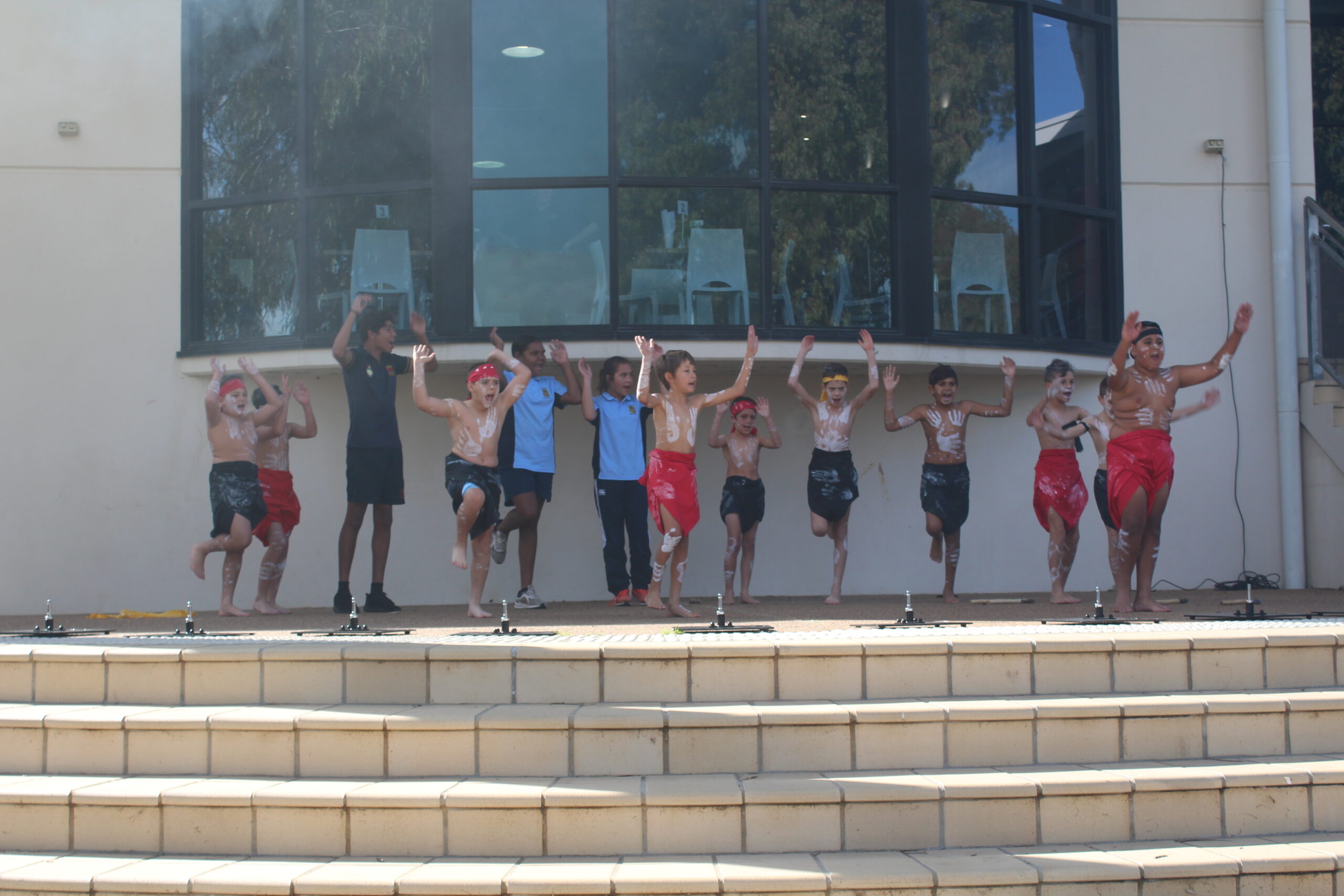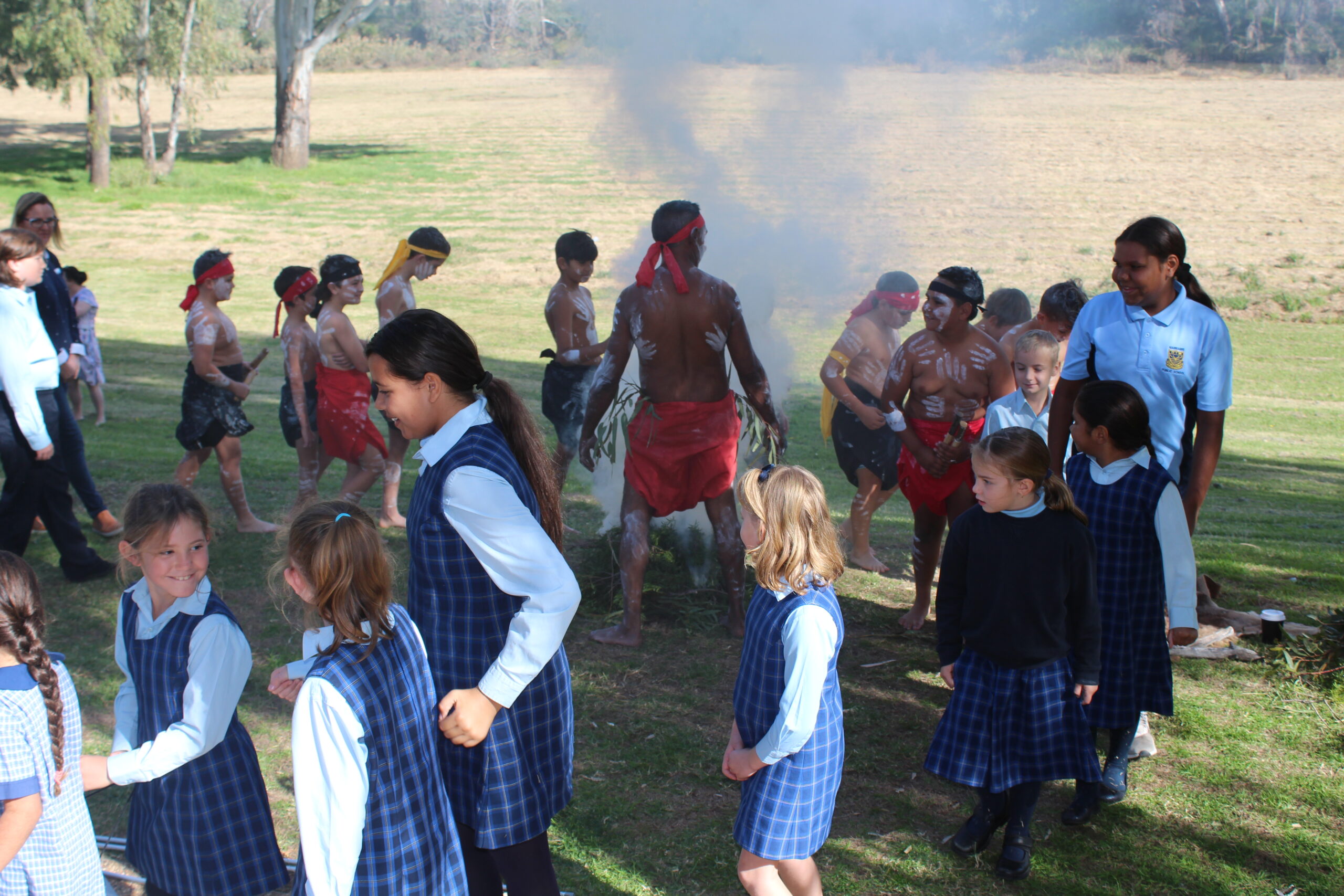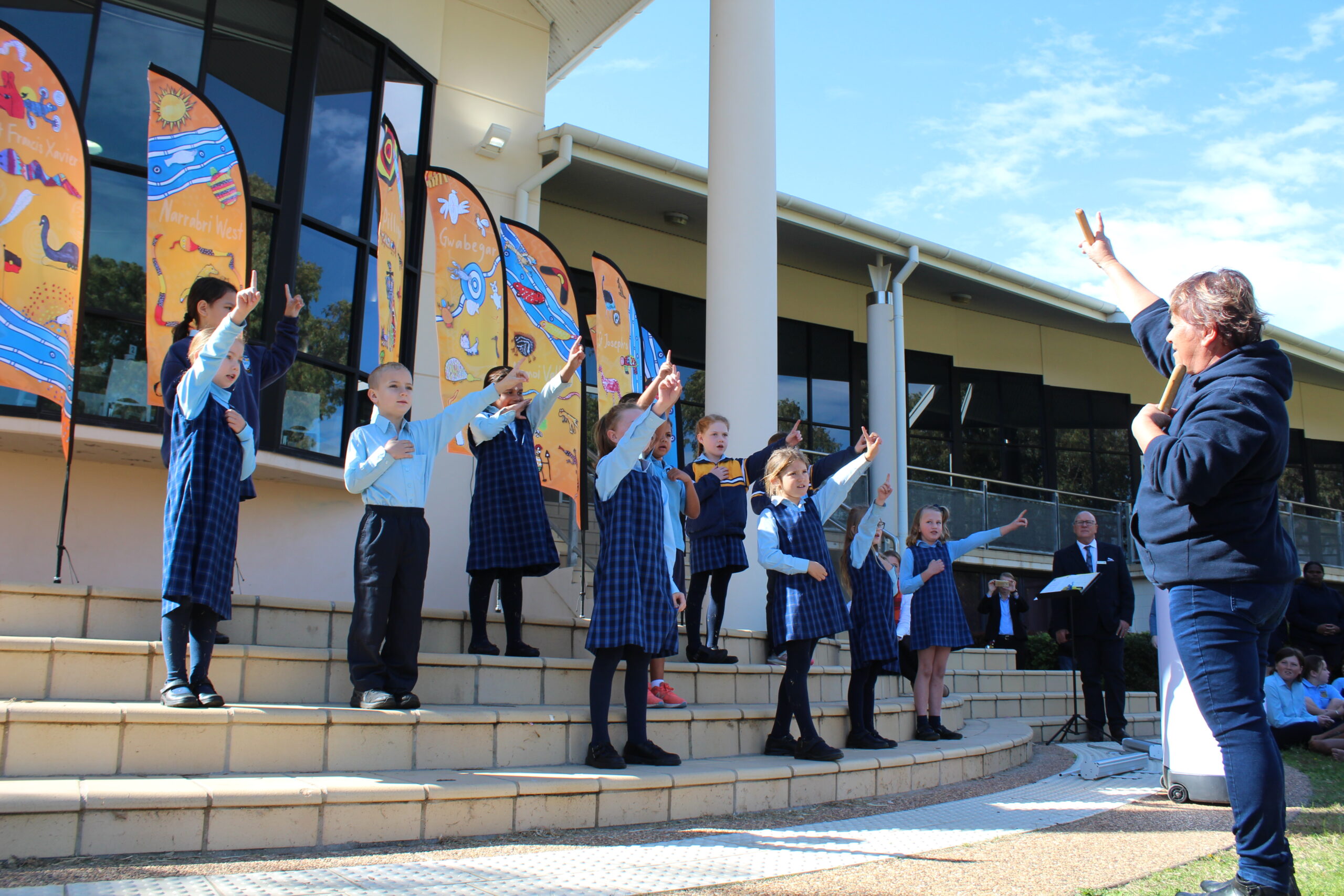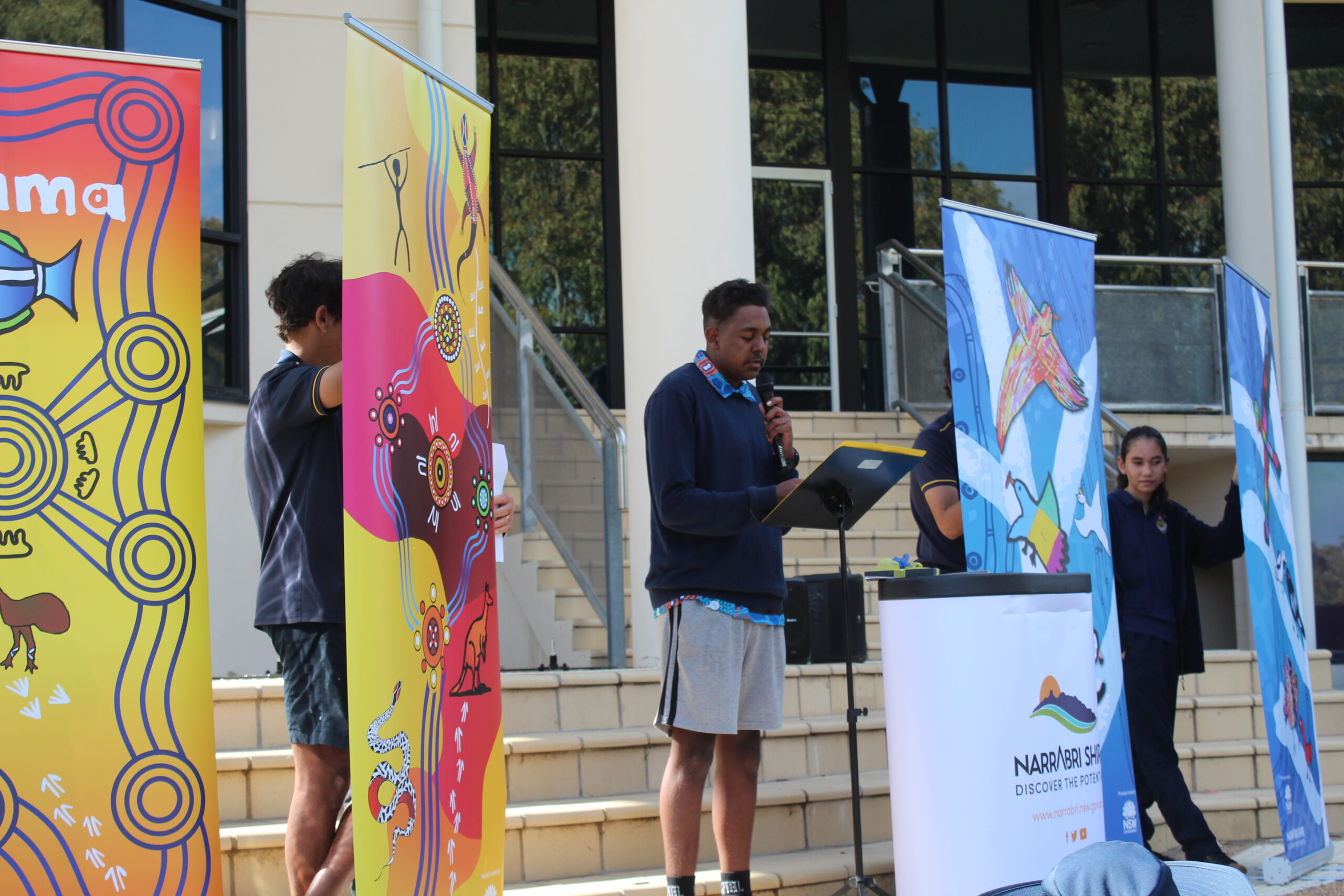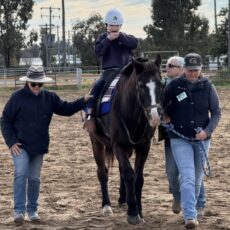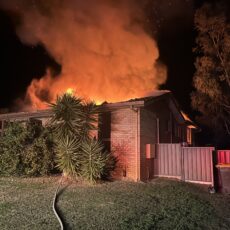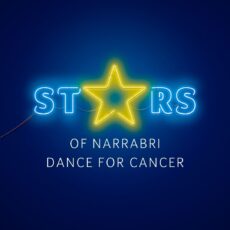After a lot of workshops and creative collaboration between schools across the region, the final indigenous artworks for the Narrabri Shire Youth Art and Culture project were revealed last week.
The NSW government-funded initiative includes a total of 12 new flags and six town banners, all of which tie into the local Kamilaroi culture.
The flags were created by primary schools across the shire including Boggabri’s Public School and Sacred Heart, Maules Creek’s Fairfax Public School, Narrabri’s Public, West and St Francis Xavier’s schools, Bellata Public School, Wee Waa’s St. Joseph’s and Public School, Pilliga Public School and Gwabegar Public School.
Meanwhile, the town banners were created by Wee Waa High School, Narrabri High School and Sacred Heart Boggabri.
The new flags will be displayed proudly at the primary schools, and the banners will be exhibited in their respective towns from as early as NAIDOC Week 2021.
Students worked together with staff and Zest Events to create the unique designs.
The primary schools’ flags are tied together by the theme of water and land, with a red soil background and snippets of the Namoi River present across all twelve designs.
Meanwhile the high school flags are more unique to their specific town and understandings of the local indigenous heritage.
The unveiling aligned with National Reconciliation Week, as a symbolic gesture to the traditional owners of the land.
A special ceremony took place on Wednesday, June 2, at The Crossing Theatre for the big reveal.
All 14 schools from across Narrabri Shire were in attendance, as well as a number of indigenous elders and representatives from the area.
Narrabri Shire mayor Ron Campbell opened the event with Wee Waa High School’s Aboriginal education officer, Helen Wenner, who delivered the welcome to country.
“The theme for this year’s Reconciliation Week is ‘more than a word’,” explained Mr Campbell.
“It takes action, which we’ve achieved by creating long-lasting local artwork that shares the cultural significance throughout our Shire communities. Everyone involved in this project should be congratulated for their contributions – it truly has been a Shire-wide initiative that has connected people of all ages.”
After the formal opening, Alf Priestly then conducted a traditional smoking ceremony.
“The smoke sends messages of love to those who have passed,” Mr Priestly explained.
“As it goes up into the sky, so do our thoughts and prayer for the creator above and our loved ones who are no longer with us.”
Once Mr Priestly had started a small fire for the ceremony, he encouraged everyone in attendance to walk around the fire and through the smoke.
Attendees soaked in the smoke as they walked through, engaging in the symbolic gesture.
After the smoking ceremony, the crowd watched Patricia Lettice’s Kamilaroi Dance Group perform a traditional dance.
Zest Events’ Andi Mether spoke next, saying how proud she was of the final product the students were able to create.
Finally, the artworks were revealed.
The town banners were shown first, two at a time by staff and student representatives from each school.
Wee Waa High School went first, with student Lacey Evans explaining the meaning behind the design.
“WalaayBaa means home, we’re all really proud of how the artwork turned out and the students are so thankful for the opportunity to participate in this project,” she said.
Mrs Wenner echoed the sentiment, saying “as an elder, I’m just so proud of these students and how they’ve represented the dreaming stories in a modern way”.
Narrabri High School’s banners were revealed next, which featured traditional dot work, as well as the Aboriginal greeting ‘yaama’.
The school’s Aboriginal education officer, Jackie Jones, explained that the design represents culture and heritage, connecting communities.
The Boggabri town banners were unveiled next, with two students saying they’re very happy with the way their native wildlife artwork turned out.
Narrabri High School’s Clifford Toomey Jr. spoke on the school flags, explaining that the blue lines represent a link to all parts of the land.
“Everything’s connected, especially our region through rivers and creeks,” he said.
“This was a great experience for everyone involved and such a unique opportunity.”
The Kamilaroi Choir, consisting of students from Narrabri Public School, then sang ‘We Are One’ for the crowd, led again by Patricia Lettice.
The lyrics were performed in traditional indigenous language and the audience was encouraged to sing along to the chorus in English.
The local Rotary Club then cooked a sausage sizzle for attendees to enjoy after the event.
Keep up to date with future editions of The Courier to find out when and where the new town banners are displayed later this year.
Read more stories like this:
- World-renowned didgeridoo player visits Narrabri
- Jumbo sized task a labour of love for artist Graeme
- Narrabri Arts Eisteddfod continues to impress


